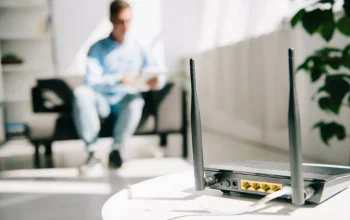It may seem strange, but the keyboard is one of the biggest problems with laptops. This component is integrated into the same system, and failing or stopping working can be a problem. We will tell you what to do if your laptop keyboard doesn’t work and the possible solutions.
We will divide the article between software and hardware tests and solutions. The software solutions are simple and can be carried out by anyone. Suppose we detect that it is a hardware problem. In that case, we send it to the manufacturer to review it and resolve it if we are still covered by the warranty. In case it is no longer covered by the warranty or a problem that is not covered by the warranty (liquid spill, for example), and if necessary, we could do the repair ourselves or take it to a specialist.
Quick and easy solutions
We can try different things, which are pretty simple before we start with other verifications or checks that can be more laborious. These options can solve that your laptop keyboard does not work. Still, the important thing is to go from the most obvious to the strangest, in that order, so as not to leave any detail that helps us ignore a malfunction.
Turn on and turn off
Although it may seem silly, many computer problems are solved by turning off the computer and turning it on again. They could be software conflicts or similar problems but are relatively easy to correct. This is solved by turning it off and on or directly restarting the computer. All processes are stopped, the RAM memory is emptied, and everything may work again without further ado.
Enter BIOS
Something straightforward that we can do is enter or, at least, try to enter the BIOS. We must turn off the laptop and turn it on again. To enter the BIOS, we must press the Delete, F12, F10 or F1 keys, which are the most common keys to access it. If we cannot enter the BIOS, everything indicates the problem with the keyboard.
If we enter the BIOS without significant problems, the problem is likely at the software level within Windows already. For this reason, at this point, we quickly know that the problem is in the operating system or in the drivers. There is no physical problem with the computer as such.
Check Windows components
A reasonably easy option if your laptop keyboard isn’t working is running a Windows scan to see if everything is working correctly. This is done through the Command Prompt window we will run as Administrator. The steps are the following:
Right-click on the Windows Start button
- We click on the Command Prompt (Administrator) option.
- When the window opens, we enter this command sfc /scannow and press Enter.
- Now, the operating system checks all the components to verify everything works. It is recommended to restart the computer after finishing this process.
What if it is a software problem?
Among the fastest and easiest options to correct the problem is in the software. There may be a problem with Windows, or the drivers need to be updated. We have two options that we can try if our laptop keyboard does not work, and they are fast.
Update windows
It is not uncommon that after a Windows update, something has stopped working correctly. It is also possible that an update is pending, and the system is starting to have performance problems. The first thing we will do is see if there are any pending updates. For it:
- Click on the Windows Start button.
- Now click on Settings.
- We enter Updates and Security.
- If it tells us that there are pending updates, we install them.
- In case of not having pending updates, we can search to see if there are any.
If the problem persists after updating or there are no pending updates, we can uninstall the latest update. The process is relatively simple:
- Within Updates and Security, we are going to See the update history.
- The first option is to Uninstall the updates.
- We look for the most recent update.
- We right-click on it and click on Uninstall.
If the problem has been corrected, it is best to wait for future updates. Everything points to a problem with Windows, some bug.
Update and/or uninstall drivers
Let’s go with another possible software solution. A relatively quick and easy solution can be to update the drivers. The easiest method is using Driver Booster, a software that searches for all the drivers on our computer. This way, we don’t have to search the laptop manufacturer’s website.
If this does not solve it, we can reinstall the drivers. The process is the following:
- We right-click on the Windows Start button.
- We enter the Device Manager.
- We go down until we find the Keyboards section.
- We must right-click on the first option.
- Several options will appear, and we will choose Uninstall the device.
- Now we must restart the computer.
- We install the driver again, either manually or using Driver Booster.
The problem may persist; we are going with other possible solutions and/or corrections.
What if it is the keyboard itself that fails?
After verifying that the problems are not software, we now turn to physical problems that cause the portable keyboard not to work. Most likely, we are faced with the situation that it is damage to the hardware itself. First, we must identify the problem to know how we can solve it (or not).
Has liquid spilled on the keys?
Spilling a liquid on the laptop, such as coffee, water or a soft drink, is common. I must say that a few years ago, I killed a keyboard by accidentally spilling a Monster on it. So don’t worry, you’re not alone in this.
If this happens to you, rest assured that the keyboard will die entirely or partially. Some high-end laptops have liquid resistance, but that feature is quite limited in many cases. But most laptop keyboards don’t have liquid resistance. Manufacturers do not make them resistant to liquids because they make the product more expensive.
Even if we run to dry it and do it with enthusiasm, it is unlikely that we will be able to solve the problem. The liquid will quickly seep through the inside of the keyboard and cause short circuits. It must be clear that the switches are mounted on a PCB and can be damaged, just like any other component board.
Consequently, we need a keyboard on the laptop at best. Additionally, laptop warranties (like other electronics) do not cover liquid damage.
The cable is broken or damaged
If you have not spilled liquid on the laptop keyboard and have ruled out software problems, let’s go with the last possibility. The problem may be the cable connecting the keyboard to the laptop.
Like any keyboard, this must be connected to the laptop’s motherboard. A flex cable is used for laptops, a fragile but elongated, flat cable. This cable may have been damaged, or the connection pins may have oxidized.
The cable at one end is soldered to the keyboard itself. The other end goes to a connector on the laptop’s motherboard, where the problem may be if it has oxidized. They may, at best, be rusty. There are products to remove or attempt to remove rust. It is not usual, but the rust could be in the connector, and the thing becomes almost impossible to fix there.
We can try to remove the rust, but it isn’t easy. The simplest solution would be to change the keyboard since removing the cable, which is soldered and very thin, is quite tricky.
Also Read: JioBook a Laptop from Reliance Jio




